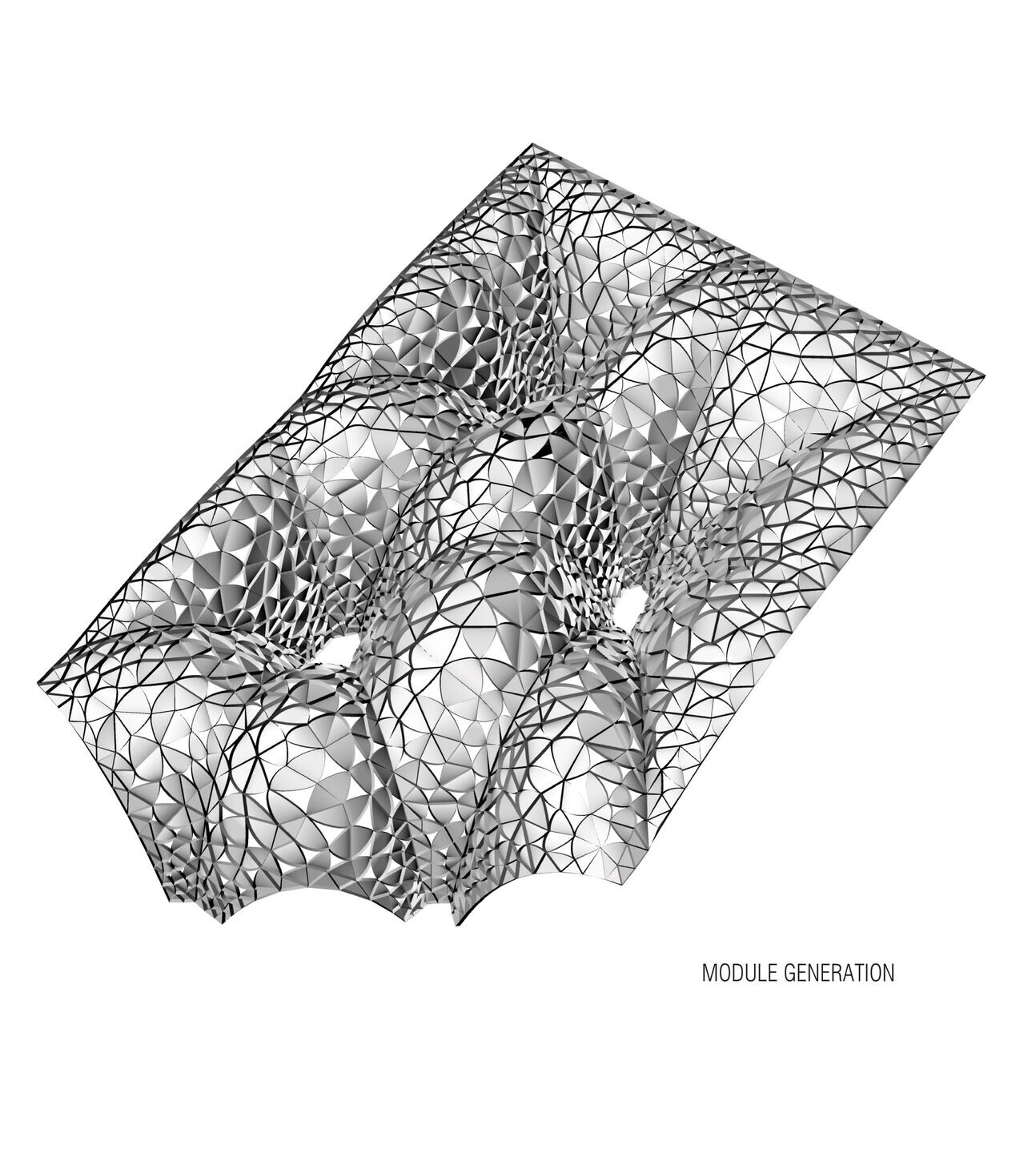Voussoir Cloud, one of a series of invited installations designed by architects for the SCIArc Gallery in Los Angeles, pursues two main project goals: first of all, we aimed to design not an object, but rather an immersive experience that fills the gallery; and second, to explore the space-structuring potential of the material we were working with - a lightweight laminated wood veneer product not typically used in architecture.
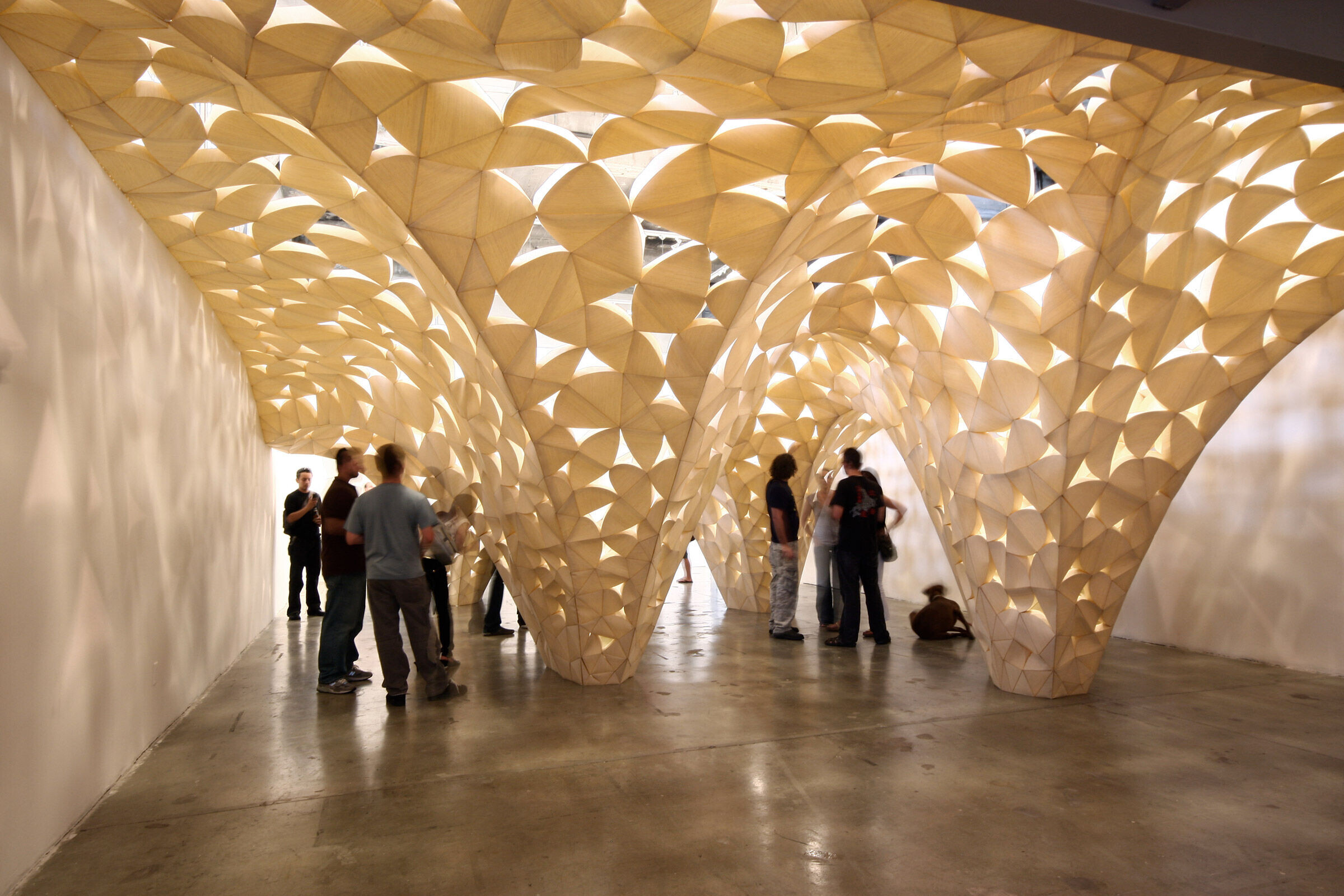
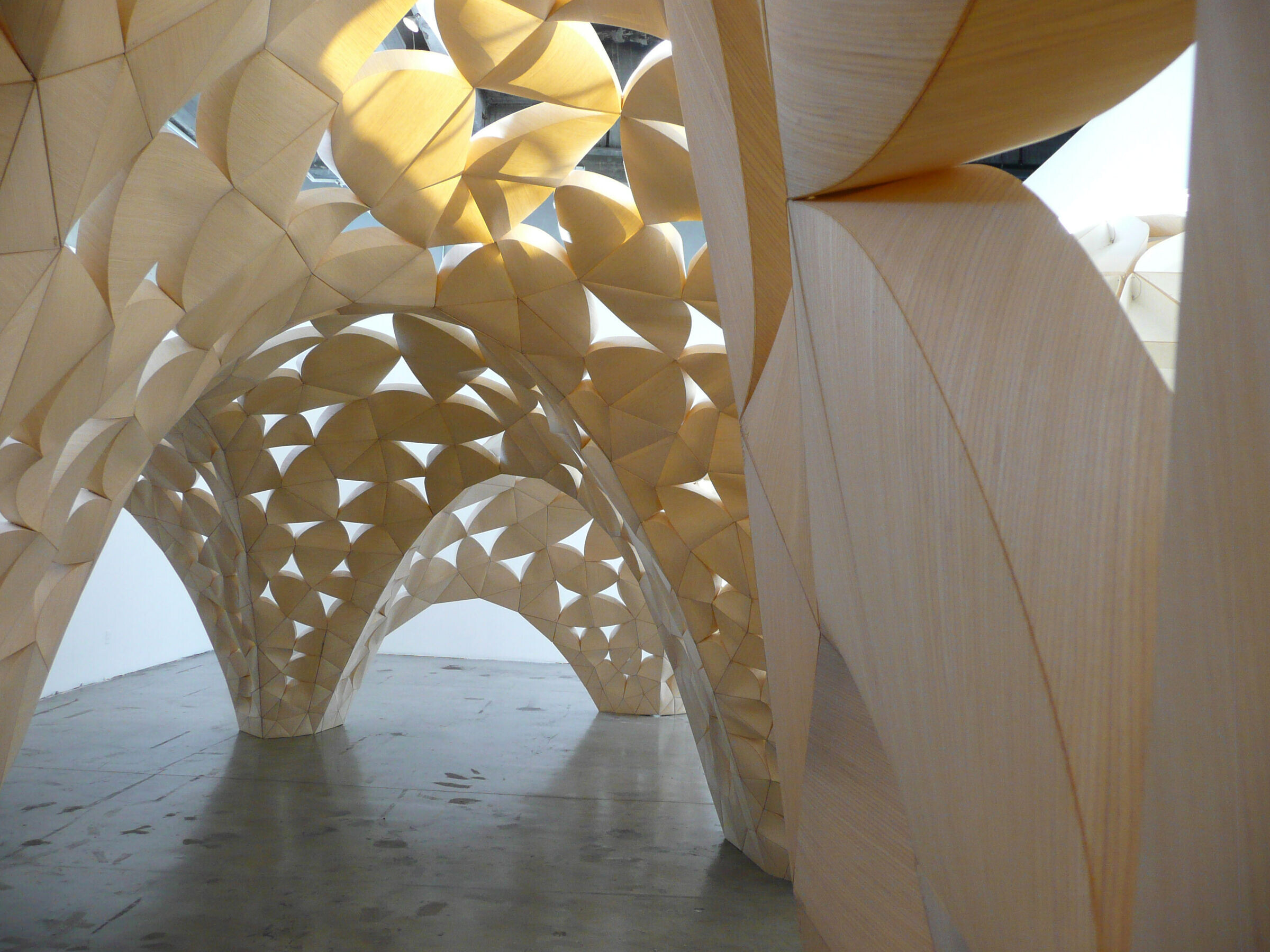
Voussoir Cloud explores the structural paradigm of pure compression coupled with an ultra-light material system. The design fills the gallery with a system of vaults to be experienced both from within and from above. The edges of the vaults are delimited by the entry soffit and the two long gallery walls. Spatially, the vaults migrate to form greater density at these edges. Structurally, the vaults rely on each other and the three gallery walls to attain their stability. The vaults’ fourteen segmented pieces also resolve to make a series of five columns that support the interior and back edge.
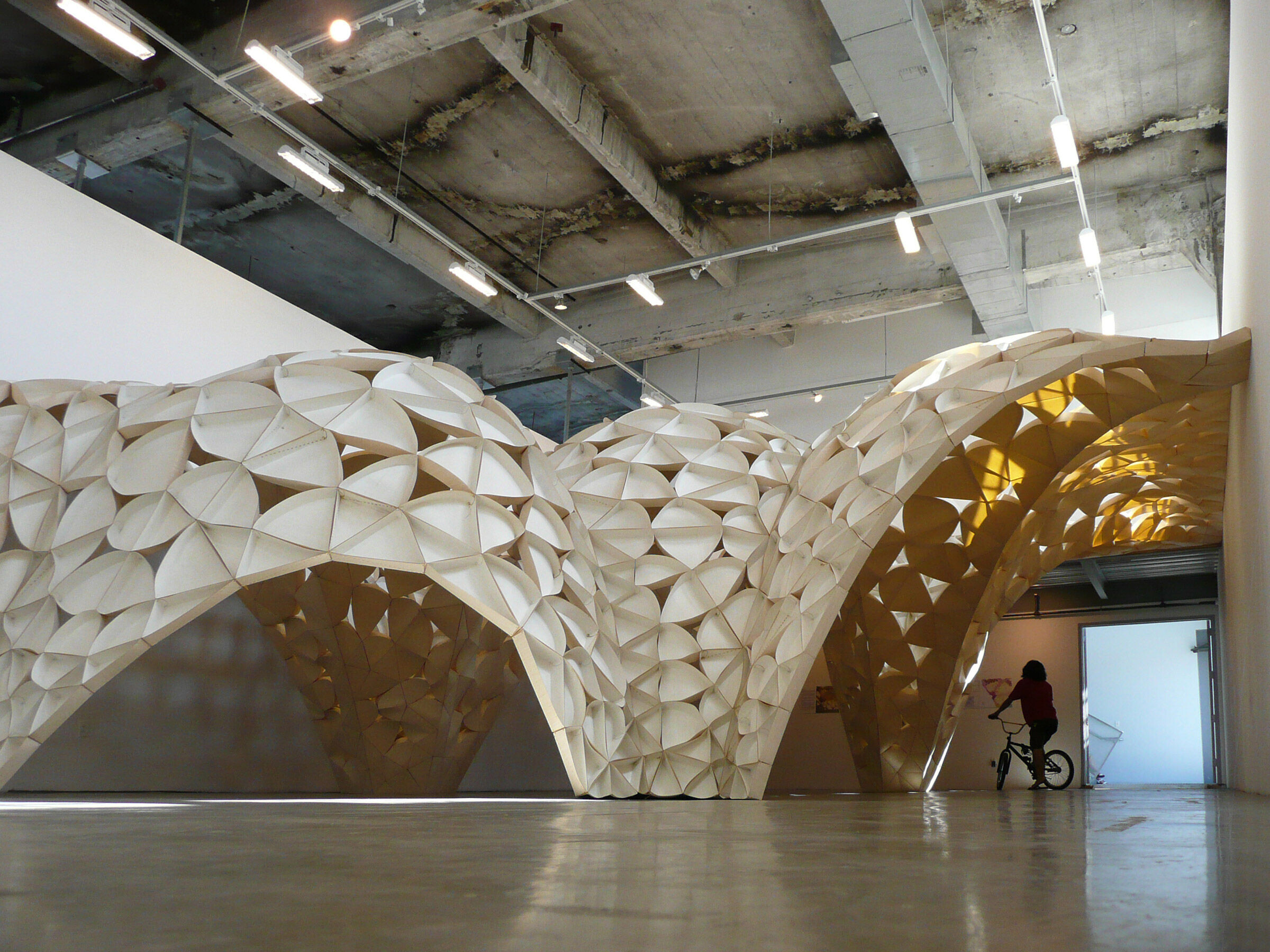
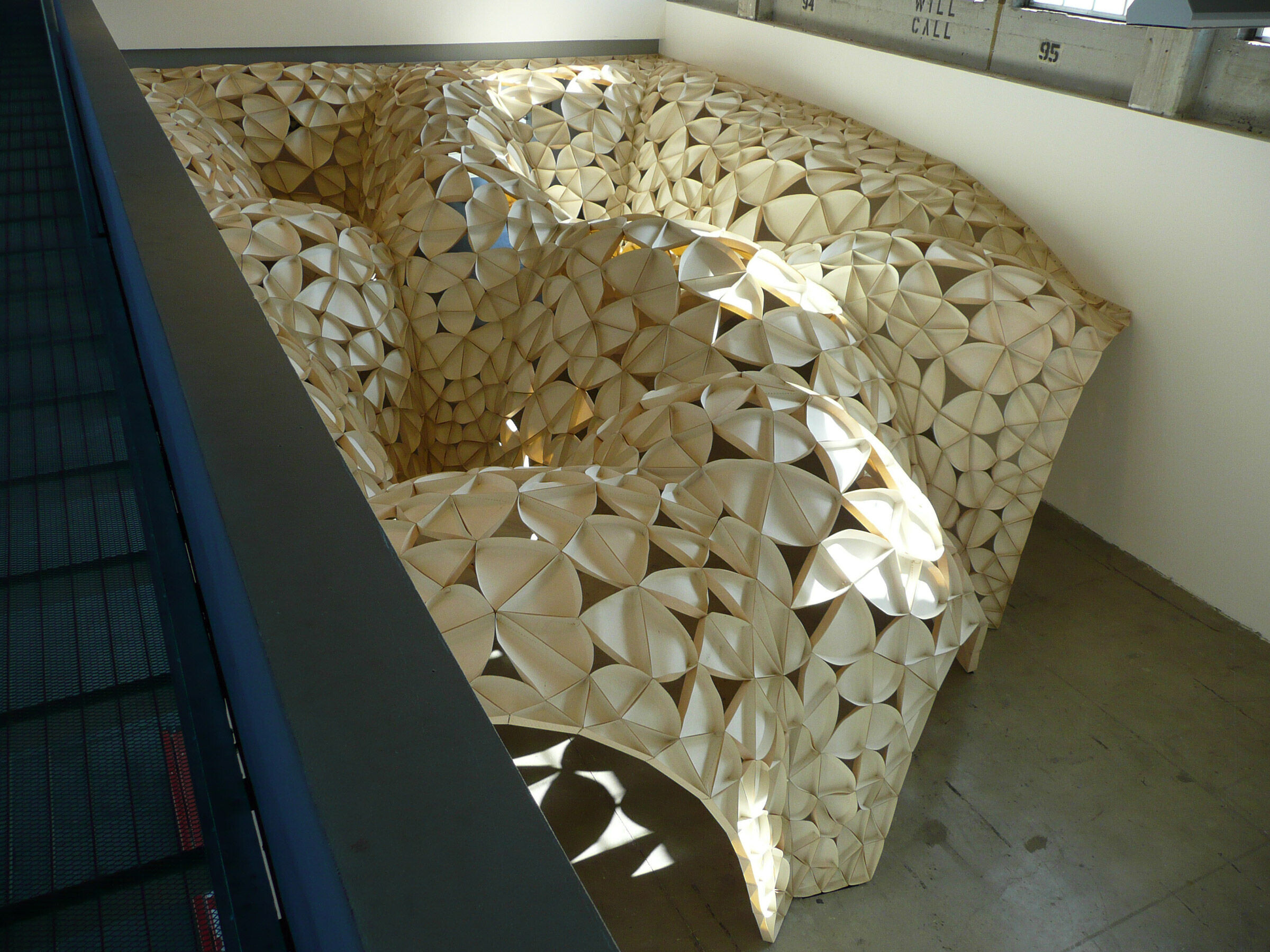
The overall design draws from the work of engineer/architects such as Frei Otto and Antonio Gaudi, who used hanging chain models to find efficient form. We used both virtual (computational) hanging chain models to refine and adjust the profile lines as pure catenaries, and form-finding software to determine the purely compressive vault shapes. In this case, however, the vaults’ structural and material strategies are rethought.
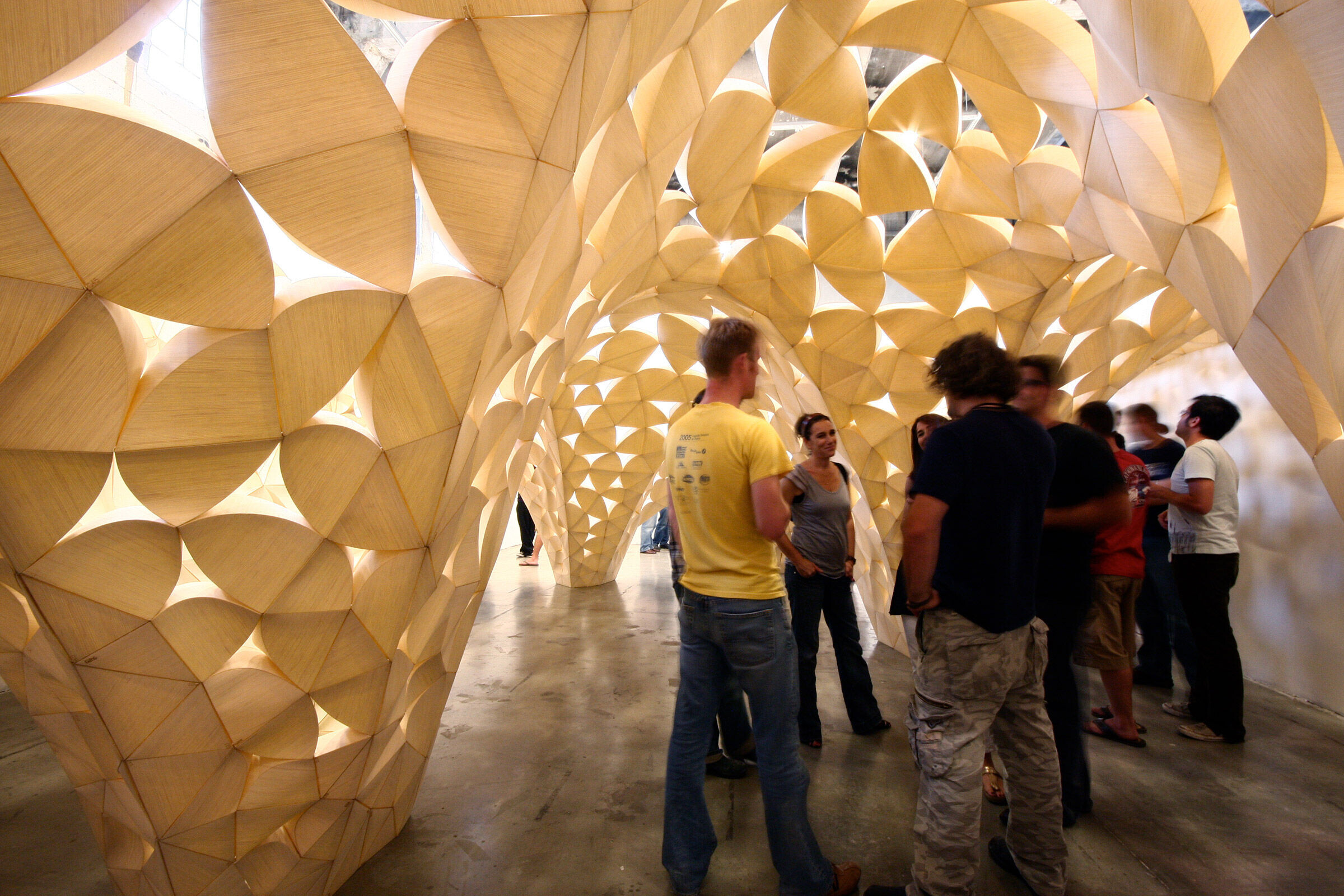
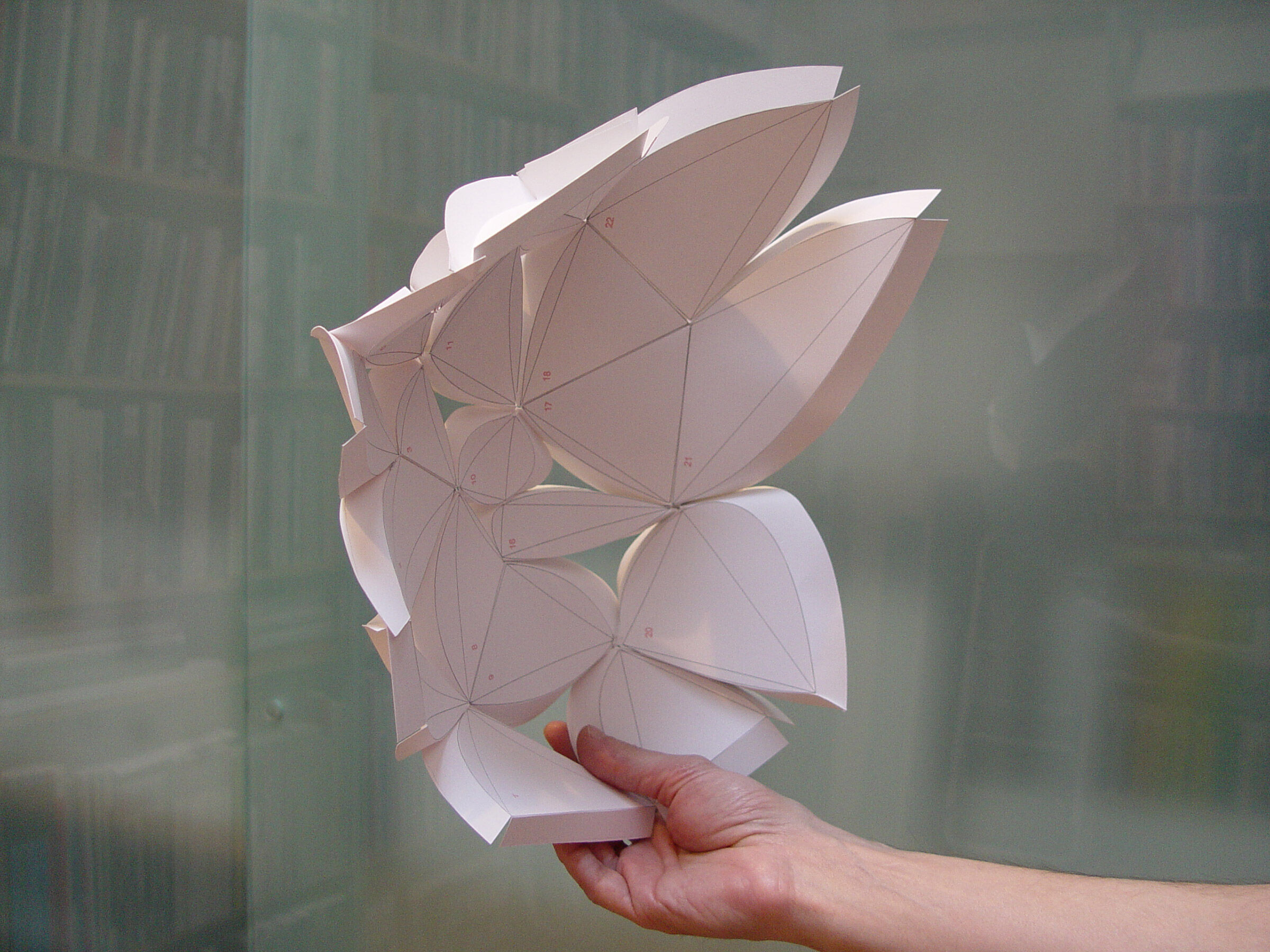
Each vault is comprised of a Delaunay tessellation that both capitalizes on and confounds the structural logics -- greater cell density of smaller more connective modules, or petals, gang together at the column bases and at the vault edges to form strengthened ribs, while the upper vault shell ‘loosens’ and gains porosity. At the same time, the petals -- our reconstituted “voussoirs”, typically defined as the wedge shaped masonry blocks that make up an arch -- are reconsidered here using paper thin material. Following an interest in ‘computational origami’, where folds occur along curved rather than straight edges, the petals have a mix of one, two and three curved sides. The resulting pattern creates a complex organic affect.

